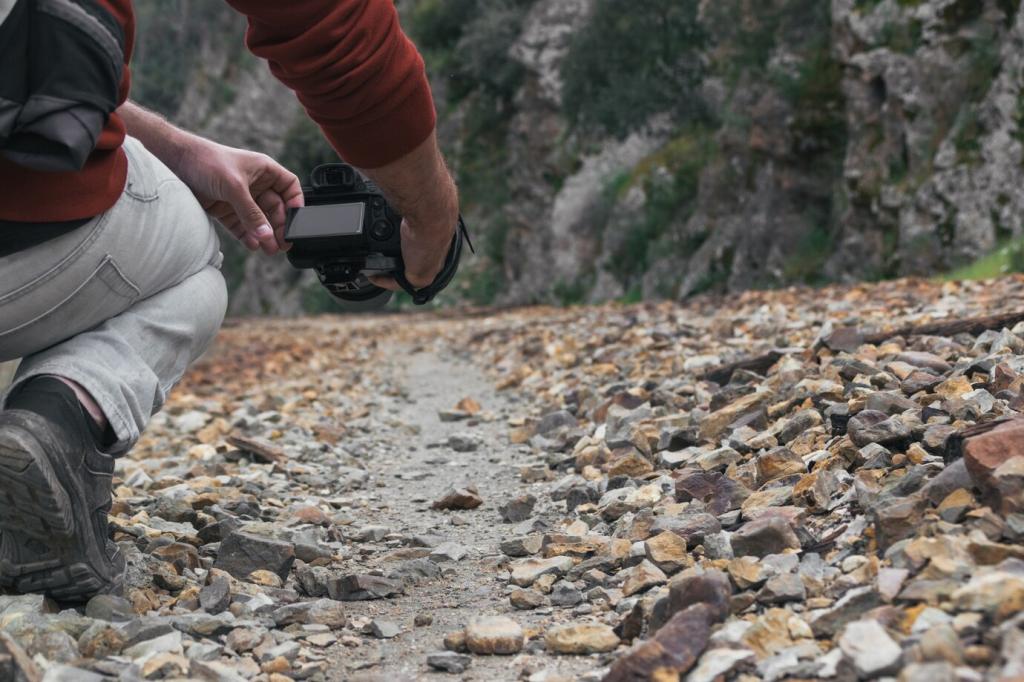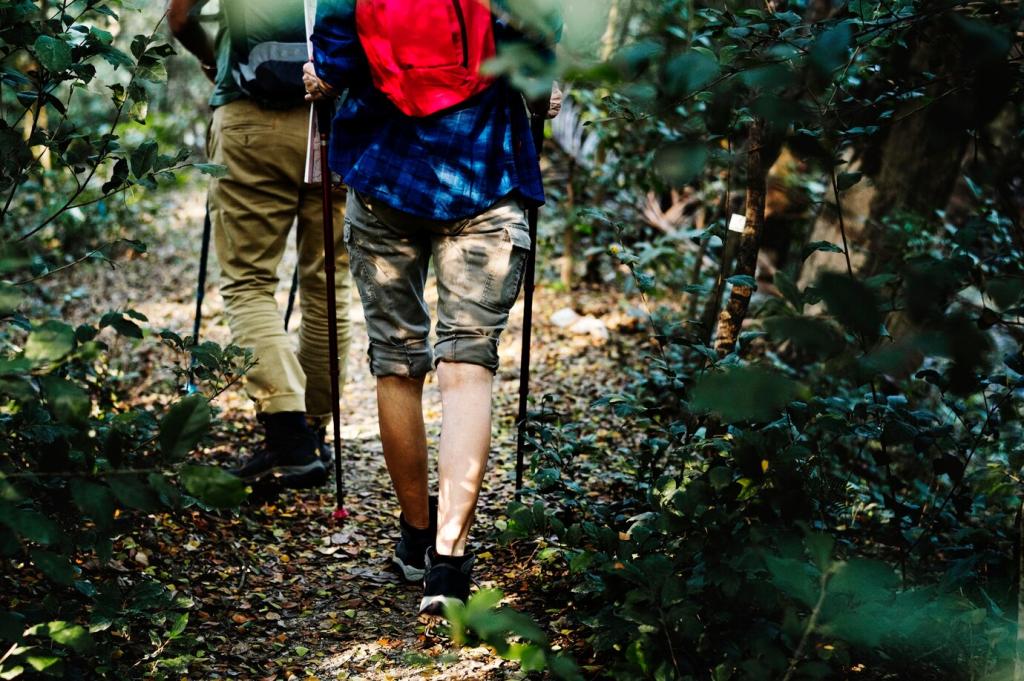Pack Smart, Walk Warm: Winter Mountain Hiking Gear Essentials
Chosen theme: Winter Mountain Hiking Gear Essentials. Build a reliable cold-weather kit that keeps you safe, comfortable, and smiling above the treeline. Join our community of winter wanderers, trade tips, and subscribe for more hands-on insights that turn frigid forecasts into unforgettable summit days.
Layering That Keeps You Moving
Base Layers: Merino vs Synthetic
Your base layer should pull sweat from skin before it freezes. Merino offers natural odor control and comfort, while synthetics dry noticeably faster during steep efforts. On bitter mornings, many hikers choose a midweight merino top paired with synthetic bottoms for quick-dry performance. What’s your favorite pairing, and why?
Insulation: Down, Synthetic, and Fleece
Down is ultralight and compressible, ideal for rest stops in clear conditions, but it struggles when wet. Synthetic insulation keeps warming even after a snow squall soaks your sleeves. Fleece breathes better during motion and layers neatly under a shell. Mix these pieces to match your pace, forecast, and terrain.
Shells: Waterproof, Windproof, and Breathable
A good hardshell blocks biting wind and spindrift while venting sweat through pit zips or breathable membranes. Aim for a jacket with a helmet-compatible hood and roomy pockets for gloves. Softshells excel on drier, high-output days. Consider both, and choose intentionally for each route’s wind exposure and expected precipitation.

Insulated Boots and Fit
Look for insulated, waterproof boots with room for thicker socks without toe compression. A half-size up can improve circulation in deep cold. Stiffer soles help with crampons and support heavy packs. Before committing, test on a cold sidewalk at night—numb toes then will become misery miles later.

Traction Choices: Microspikes, Crampons, Snowshoes
Microspikes shine on packed trails and low-angled ice. Crampons bite into steeper, firmer slopes or mixed terrain. Snowshoes float on unconsolidated powder, where postholing wastes energy and time. Bring the right tool for the day’s surface, and practice transitions so you can switch quickly when conditions change.

Socks, Liners, and Gaiters
Start with a thin liner sock to reduce friction and wick sweat, then add a medium-weight wool sock for warmth. Tall, waterproof gaiters keep snow out and trap heat around your lower legs. If your feet sweat heavily, carry a spare pair to swap at lunch for instant comfort.
Layer gloves like clothing: thin liners for dexterity, warm insulated gloves or mittens for heat, and a waterproof shell to block spindrift. Mittens outperform gloves for pure warmth, but pair them with touchscreen liners for quick phone or GPS checks. Pack chemical warmers for emergency reserves on frigid summits.
Hands, Head, and Face: Small Items, Huge Comfort
Hydration, Nutrition, and Heat Strategy
Insulated bottles beat bladders when hoses freeze. Store bottles upside down in a sleeve so ice forms at the bottom, not the cap. On a windy ridge last January, my hose froze solid within minutes; switching to a wide-mouth bottle in a jacket pocket saved the rest of the day.
Hydration, Nutrition, and Heat Strategy
A small stove and windscreen turn a bleak rest stop into a morale booster. Hot tea, broth, or cocoa warms hands and spirits while adding calories. Choose fuel that performs in cold, and keep lighters in an inner pocket. Share your favorite winter thermos hack with fellow hikers.
Hydration, Nutrition, and Heat Strategy
Cold dulls appetite, so plan easy-to-eat, high-calorie snacks. Soft bars, nut butters, and savory wraps resist freezing better than water-heavy foods. Aim to snack every 45 minutes. If you forget, your body will remind you with chills and sluggish steps—set a timer and keep the engine humming.


Navigation and Safety: Gear That Guides and Saves
If your route crosses avalanche terrain, bring a beacon, shovel, and probe—and the training to use them quickly. Dig quick pits, read wind signs, and talk with partners about safe travel. No gear replaces judgment. Share a course recommendation to help newcomers build life-saving skills this season.
Navigation and Safety: Gear That Guides and Saves
Electronics fail in cold, so pair a paper map and compass with GPS. Keep devices warm with spare lithium batteries, which outperform alkaline in freezing temperatures. A PLB or satellite messenger provides emergency communication beyond cell service. Practice triangulation at home, then test it in gentle terrain before bigger objectives.
The Winter-Ready Pack: Capacity, Organization, and Access
Choose the Right Pack Volume and Frame
Winter layers, thermoses, and safety gear demand space. Many hikers find 35–45 liters ideal for day missions. A supportive frame handles extra weight from traction, while reinforced attachment points manage tools. Try loading your pack the night before to catch missing items and streamline your early start.
Quick-Access Pockets and External Carry
Keep gloves, snacks, and goggles near the top or in hip pockets. Lash snowshoes securely when trails firm up, and stash crampons in a protective bag. Separate wet items from insulation. A simple habit—always return items to the same pocket—prevents frantic searching with numb fingers on windy ridges.
Battery Care and Electronics in the Cold
Cold saps charge fast. Use lithium batteries, carry spares near your body, and consider a small power bank wrapped in insulation. Turn devices off between checks. Label battery bags by device for fast swaps. What battery tricks have saved your navigation, camera, or headlamp on a long, dark descent?
Home Gear Shakedown and Field Test
Do a living room shakedown: gloves on, goggles on, practice finding everything. Then test locally on a short, cold loop. If zippers snag or bottles leak, fix it now. Little improvements at home prevent big headaches above treeline, where weather rarely waits for fumbling fingers and good intentions.
Weather Windows and Turnaround Times
Gear helps, but timing rules winter. Watch wind speeds, gusts, wind chill, and recent snowfall. Set a firm turnaround time before leaving the trailhead. The warmest jacket cannot outmuscle a late-day whiteout far from shelter. Comment with your favorite forecasting resources so others can plan safer weekends.
